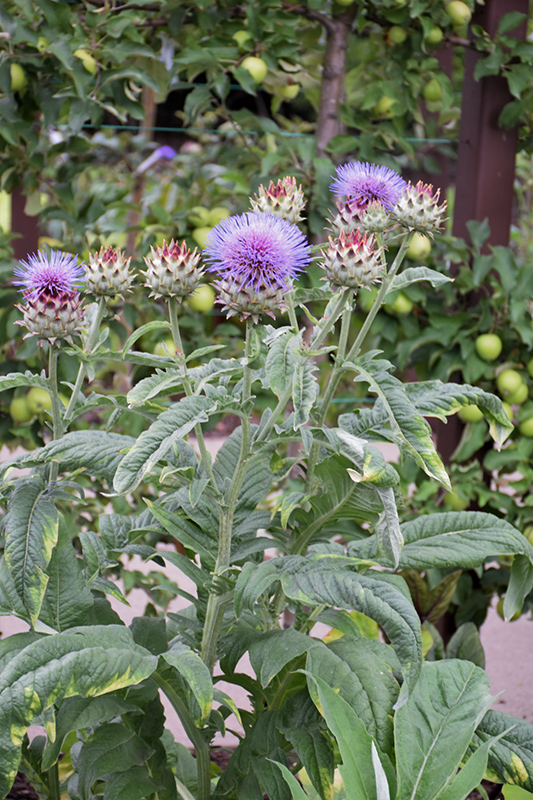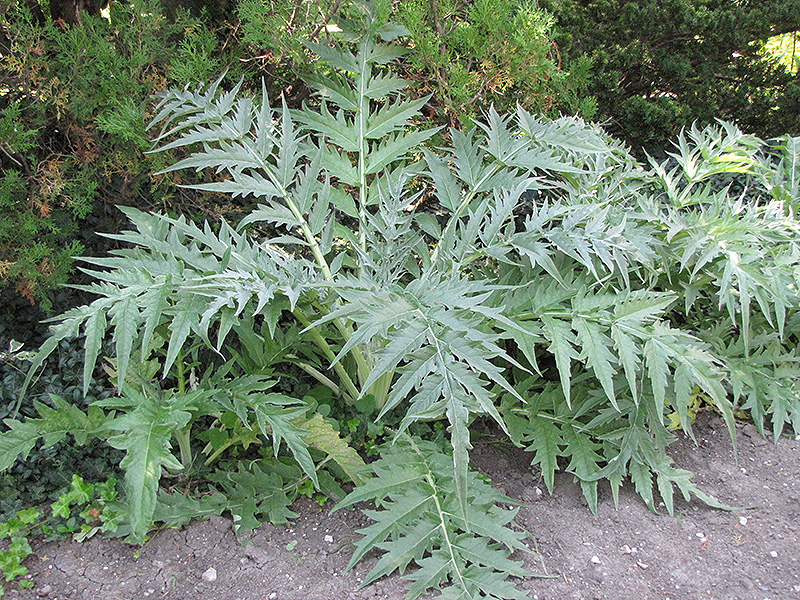Plant Height: 4 feet
Flower Height: 6 feet
Spread: 3 feet
Sunlight:
![]()
Hardiness Zone: 5
Other Names: Cynara cardunculus var. scolymus
Description:
Splendid arching silvery, spiny foliage is an architectural delight in the garden; careful when handling the spiny foliage; flower buds are cultivated and harvested as a vegetable; perfect for containers, borders, or vegetable garden
Edible Qualities
Globe Artichoke is a perennial vegetable plant that is typically grown for its edible qualities, although it does have ornamental merits as well. It produces grayish green round flowers with creamy white flesh which are harvested from early to mid summer. The flowers have a distinctive taste with a fleshy texture and a sweet fragrance.
The flowers are most often used in the following ways:
- Cooking
- Pickling
Planting & Growing
Globe Artichoke will grow to be about 4 feet tall at maturity extending to 6 feet tall with the flowers, with a spread of 3 feet. It grows at a medium rate, and under ideal conditions can be expected to live for approximately 10 years. As an herbaceous perennial, this plant will usually die back to the crown each winter, and will regrow from the base each spring. Be careful not to disturb the crown in late winter when it may not be readily seen! This is a self-pollinating variety, so it doesn't require a second plant nearby to set fruit.
This plant is quite ornamental as well as edible, and is as much at home in a landscape or flower garden as it is in a designated vegetable garden. It should only be grown in full sunlight. It does best in average to evenly moist conditions, but will not tolerate standing water. It may require supplemental watering during periods of drought or extended heat. It is not particular as to soil pH, but grows best in rich soils. It is highly tolerant of urban pollution and will even thrive in inner city environments, and will benefit from being planted in a relatively sheltered location. Consider applying a thick mulch around the root zone in winter to protect it in exposed locations or colder microclimates. This species is not originally from North America.



